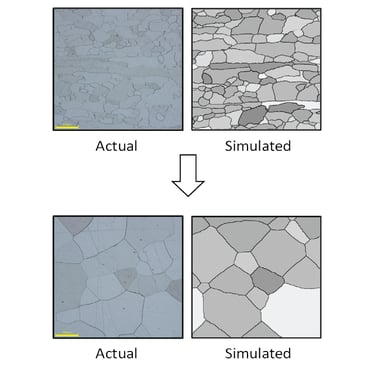


C++ based Monte Carlo Grain Boundary Simulation Model
At JSW, I undertook the development of a sophisticated Monte Carlo simulation model aimed at predicting grain boundary movements during the annealing process of steel samples. This process, characterized by its inherent uncertainty, required a robust framework to simulate the complex interactions occurring at elevated temperatures. I utilized the Monte-Carlo Potts model framework, integrating critical inputs such as the crystallographic texture and Kernel Average Misorientation of the initial material. These factors significantly influence the final grain structure after annealing. The model was designed to simulate boundary movements with high precision, allowing us to optimize the annealing process by adjusting variables like temperature and soaking time.
The results were remarkable: by applying this model, we managed to reduce the net annealing time by 25%, which translated into substantial cost savings—over 12 crores in projected impact. The success of this project not only enhanced our operational efficiency but also provided valuable insights that were recognized at the IIM-ATM 2023 conference, where I had the opportunity to present our findings. This work demonstrated the power of combining advanced simulation techniques with material science, driving innovation and efficiency in industrial processes.
You can access the entire poster here.
